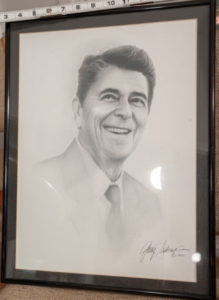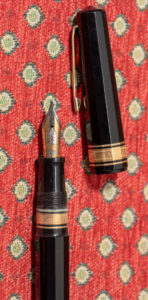 What do I mean by cross collectible? And why should you know about this if you want to sell an object? Because online platforms usually ask you to list an object in a certain category, which isn’t always your best strategy. I explain more below, but in short, I suggest you use your imagination and list certain objects in multiple categories.
What do I mean by cross collectible? And why should you know about this if you want to sell an object? Because online platforms usually ask you to list an object in a certain category, which isn’t always your best strategy. I explain more below, but in short, I suggest you use your imagination and list certain objects in multiple categories.
The explanation:
If you read my article about the stuffed 1958 toy Huckleberry Hound, a character from Hanna Babera Studios, you see it pertains to more than one desirable genre.
- 1960s children’s toy, valuable in good shape
- A character from a favorite (first animated show ever to win and Emmy) TV show
- In perfect shape early 20th century stuffed toys with plastic faces
- An original label
- The cultural icon Huckleberry Hound
All these categories make the toy cross collectible in the market and valuable on many levels.
Cross Collectability
 The theory of cross collectability comes from the traditions of auction houses. Auction houses offer objects in categories. For example, one auction on a certain date baers the category name “Native American and Ethnic Objects.”
The theory of cross collectability comes from the traditions of auction houses. Auction houses offer objects in categories. For example, one auction on a certain date baers the category name “Native American and Ethnic Objects.”
In its inception eBay borrowed this tradition of selling items by category to create an online auction. Let’s say folks bid on a Western style painting by a Native American artist. Collectors value the artwork as both an early Western style painting and as a work by a Native American artist. Which means, two or more bidders with two separate areas of collecting bid on an object. One bidder collects Western paintings, one collects works by Native American artists. Because of more competition on the auction house floor, the work’s value increases as the auction progresses. So collectors consider objects that span two or more categories more valuable in the market.
Some other examples of objects that are cross collectibles:
 Sterling candelabra valued for the metal, and valued as lighting
Sterling candelabra valued for the metal, and valued as lighting- Fine writing implements, such as early Montblanc pens, valued for the name and valued for the era
- Vintage clothing valued for the designer and valued for the size, date, color, workmanship
- Militaria valued for a certain historical war, for who used it, rarity, and the medium
- Photography, especially autographed photos, valued for the image, the celebrity, the autograph, the historicity, and the era, as well as the subject matter
You get the idea. If you can’t sell an object in one category, say on eBay, or WorthPoint, et al, you should try multiple categories. Think outside the category box. This theory applies to any type of advertising you might do to sell something. Think of the kinds of collectors, and target the collectors, not the object itself, by its limited category.